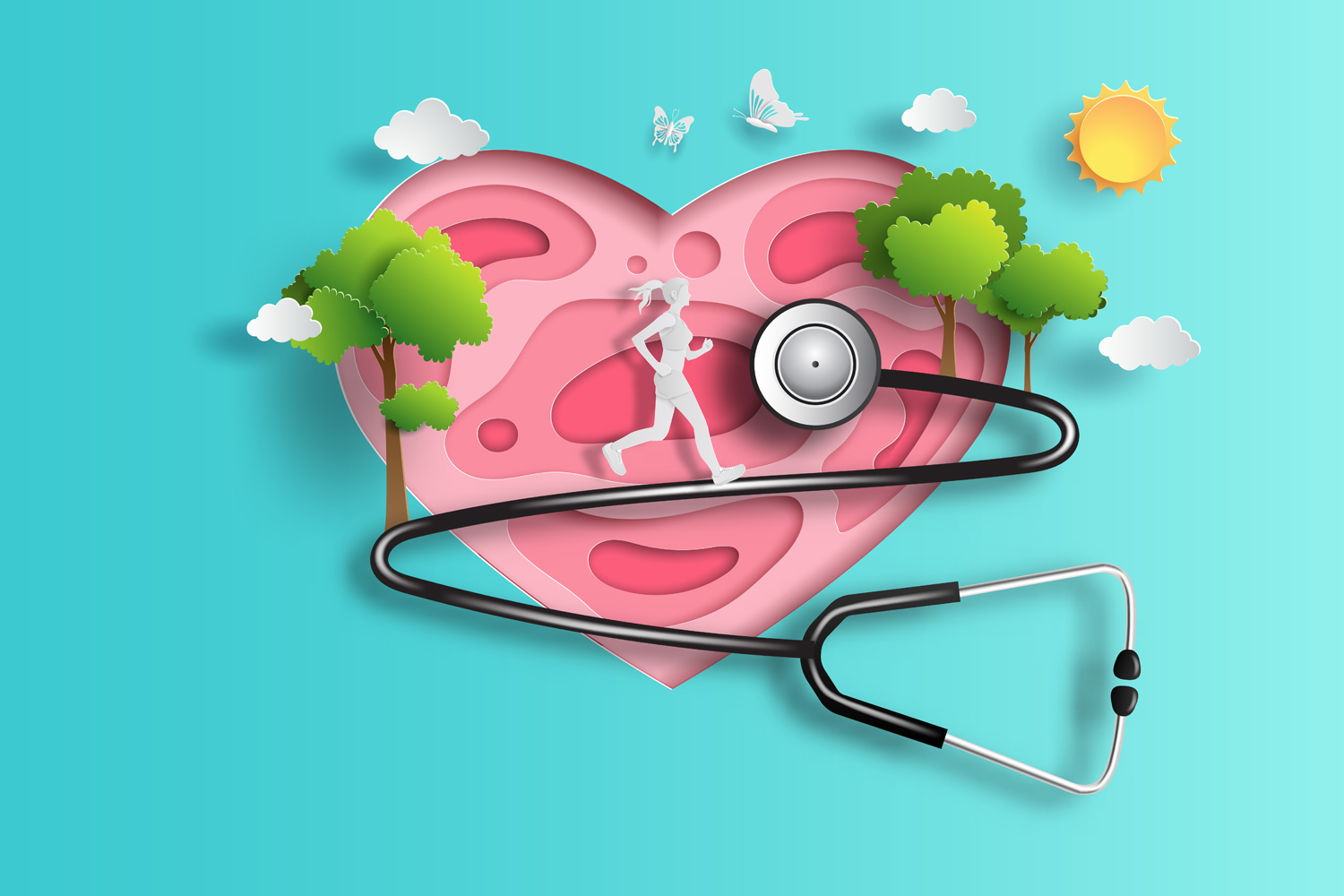HEART DISEASE IS THE LEADING CAUSE of death for women in the U.S., accounting for about one in every five female deaths. Women who have been treated for breast cancer are at even greater risk for developing heart problems, making heart disease the most frequent cause of noncancer deaths in this group. A study published in the Jan. 13, 2022, issue of the Journal of Clinical Oncology explored the link between breast cancer and heart disease.
The Pathways Heart Study included 14,942 women with breast cancer and 74,702 women without breast cancer and found that those with a cancer diagnosis are more likely to develop high blood pressure (hypertension) and diabetes, both of which are important risk factors for heart disease. The risks were greatest for women who had received chemotherapy, hormone therapy or left-sided radiation to treat their cancer. Radiation directed to the left breast is known to come with an increased risk for incidental damage to the heart.
Anne Blaes, a medical oncologist and director of cancer survivorship services and translational research at University of Minnesota’s Masonic Cancer Center in Minneapolis, offers these tips for women with a history of breast cancer to reduce their risks for serious heart problems.
Don’t smoke.
Exercise regularly. Blaes recommends 150 minutes of aerobic exercise per week along with strength training.
Work with your doctors to monitor for and treat high blood pressure, cholesterol and blood sugar.
“Our study findings highlight the importance of informing breast cancer patients about their long-term risk for diabetes and high blood pressure,” says Marilyn Kwan, a cancer epidemiologist at Kaiser Permanente Northern California (KPNC) in Oakland who led the study. “Identifying this higher risk is the first step in improving health outcomes in breast cancer patients.”
The women, who were diagnosed with invasive breast cancer from 2005 to 2013 at KPNC, were matched for age, race and ethnicity with a population of women without breast cancer. The Pathways study is an ongoing effort to understand how lifestyle choices after a woman’s diagnosis with breast cancer can affect their survivorship outcomes. Previous studies had pointed to the detrimental effects on the heart of certain breast cancer treatments. In the new study, Kwan’s team set out to explore the role of well-established cardiovascular risk factors, including diabetes, hypertension and high levels of low-density lipoprotein (LDL), often called “bad” cholesterol, in people who had been treated for breast cancer.
The study showed higher cumulative incidence rates for high blood pressure and diabetes in people who had a history of breast cancer. The rate of high blood pressure was 10.9% in women two years after a breast cancer diagnosis compared with 8.9% in the women without breast cancer. For diabetes, the results showed incidence rates of 2.1% in women two years after a breast cancer diagnosis compared to 1.7% in women without breast cancer. The increased risk for diabetes among those with a breast cancer diagnosis persisted after 10 years, with cumulative incidence rates of 9.3% in the breast cancer group versus 8.8% in women without breast cancer a decade later. The study did not find an increased incidence of high cholesterol levels for women who had a history of breast cancer.
“For hypertension, we saw the most rapid increase in risk in the first two years after breast cancer treatment,” Kwan says. Diabetes showed a notably different pattern, she adds, with the risk gradually increasing for up to 10 years.
The diabetes risk was elevated in women whose breast cancer treatments included chemotherapy, left-sided radiation therapy or hormone therapy compared to those in the control group. The risk for high blood pressure was also elevated in women who had left-sided radiation or hormone therapy. For reasons that aren’t yet clear, women whose weight was in the normal range at the time of their diagnosis were at higher risk of developing diabetes and high blood pressure following treatment for breast cancer than those who were overweight or obese at the time they were diagnosed.
Anne Blaes, a medical oncologist and director of cancer survivorship services and translational research at University of Minnesota’s Masonic Cancer Center in Minneapolis, says the new findings are in line with a growing body of literature demonstrating shared risk factors for cancer and heart disease as well as links between certain cancer treatments and heart disease. She notes that while the individual increases in risk may look modest, they add up.
“As a result, it’s very important for breast cancer survivors to work with primary care providers and manage their blood pressure, cholesterol and blood sugar,” she says.
The identification of underlying risk factors could help doctors identify those with the highest risk for developing heart disease after a breast cancer diagnosis and treatment. In future studies, Kwan says they plan to explore specific interventions that could help lower cardiovascular risks for survivors.
“Our findings support having an open conversation with your oncologist and raising awareness that these treatments might increase risk factors [for heart disease],” Kwan says. “Follow the healthy guidelines that are out there to minimize the risk.”
Cancer Today magazine is free to cancer patients, survivors and caregivers who live in the U.S. Subscribe here to receive four issues per year.





